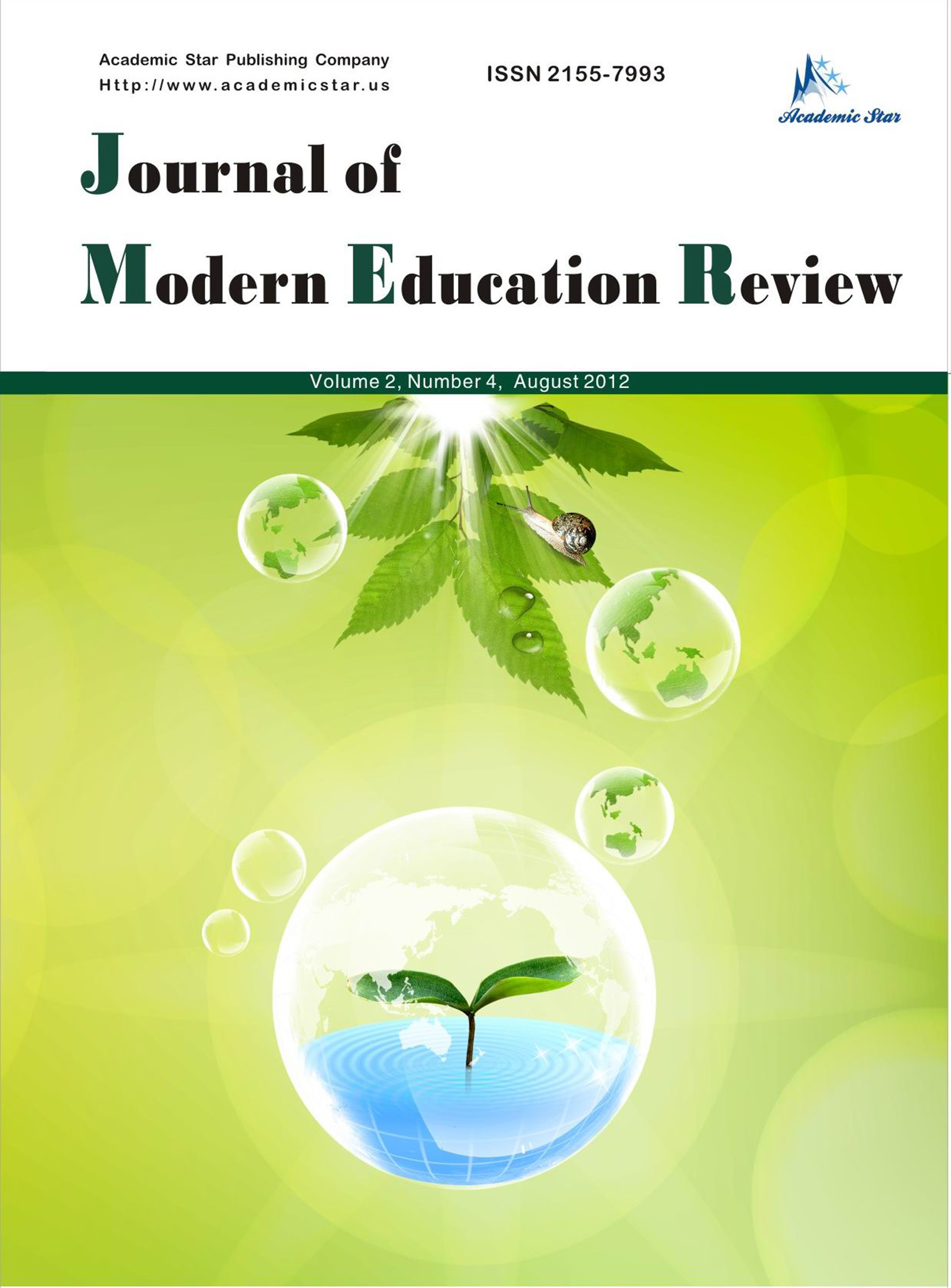Humanities

- ISSN: 2155-7993
- Journal of Modern Education Review
Interschool Violence and Mental Health of Victims — The Observer — The Importance of Prevention
Stamo Stergioti, Galateros Grigorios
(Primary Education Department, Serres, Greece)
Abstract: School bullying is a major social problem that has been on the rise in recent years, due to the constant exposure of minors to violence. In fact, with the extensive use of mobile phones, bullying goes beyond the limits of school and invades the victim’s home. Each bullying incident involves the abuser, the victim, and the observer. It is noteworthy that many victims are perpetrators at the same time. Most often the perpetrators are boys, while the two sexes suffer different forms of bullying.
The most frequently occurring psychological effects on victims are depression and lack of self-esteem, which lead to self-destructive behaviors. The role of the observer is important, since he can suppress or enhance the episode of bullying, depending on his attitude. Regarding the prevention of such phenomena, the institutional framework, as well as the school community has a primary role. Among others, placing psychologists in all schools can also offer positive results.
Key words: bullying, intra-school violence, mental health, observer, prevention
References
Boak, A., Hamilton, H. A., Adlaf, E. M., Henderson, J. L., & Mann, R. E. (2018). “The mental health and well-being of Ontario students, 1991–2017: Detailed findings from the Ontario student drug use and health survey (OSDUHS)”, CAMH Research Document Series No. 47, Toronto, ON: Centre for Addiction and Mental Health, accessed 8/2024, available online at: https://www.camh.ca/-/media/files/pdf---osduhs/mental-health-and-well-being-of-ontario-students-1991-2017---detailed-osduhs-findings-pdf.pdf.
Eyuboglu, M., Eyuboglu, D., Pala, S. C., Oktar, D., Demirtas, Z., Arslantas, D. & Unsal, A. (2021). “Traditional school bullying and cyberbullying: Prevalence, the effect on mental health problems and self-harm behavior”, accessed 8/2024, available online at: http://www.nih.gov.
Government Gazette ΦΕΚ B' 2176/08-04-2024 KYA. “Creation of a special digital platform for reporting intra-school violence and bullying phenomena”, Ministry of National Education (Δημιουργία Ειδικής Ψηφιακής Πλατφόρμας για την υποβολή αναφορών ενδοσχολικής βίας και φαινομένων εκφοβισμού. ΥΠΑΙΘΑ και Ψηφιακής Διακυβέρνησης).
Huskya, M. M., Delbastyb, E., Bitfoic, A., Cartad, M. G., Goelitze, D., Koçf, C., Lesinskieneg, S., Mihovah, Z., Otteni, R. & Kovess-Masfety, V. (2020). “Bullying involvement and self-reported mental health in elementary school children across Europe”, accessed 8/2024, available online at: http://www.nih.gov.
Karkanaki, M., & Kaffetzi, P. (2009). “The phenomenon of school bullying in Primary schools of the Municipality of Heraklion”, accessed 8/2024, available online at: https://apothesis.lib.hmu.gr/bitstream/handle/20.500.12688/1041 /Karkanaki2009.pdf?sequence=1.
Lakasas, A. (2020). “Violence in the daily life of students”, accessed 8/2024, available online at: Η βία στην καθημερινότητα των μαθητών|Η ΚΑΘΗΜΕΡΙΝΗ (kathimerini.gr).
Lysikatu, A. (2023). “Bullying: Forms and ways of prevention”, accessed 8/2024, available online at: http://www.psychology.gr.
Renner, L. M., & Boel-Studt, S. (2012). “The relation between intimate partner violence, parenting stress, and child behavior problems”, assessed 8/2024, available online: http://springer.com.
Shetgiri, R., Lin, H., & Flores, G. (2012). “Identifying children at risk for being bullies in the United States”, accessed 8/2024, available online at: http://www.academicpedsjnl.net.
Thornberg, R., Hunter, S. C., Hong, J. S., & Ronnberg, J. (2020). “Bullying among children and adolescents”, Scandinavian Journal of Psychology.






